1. Use Ornaments as Finishings
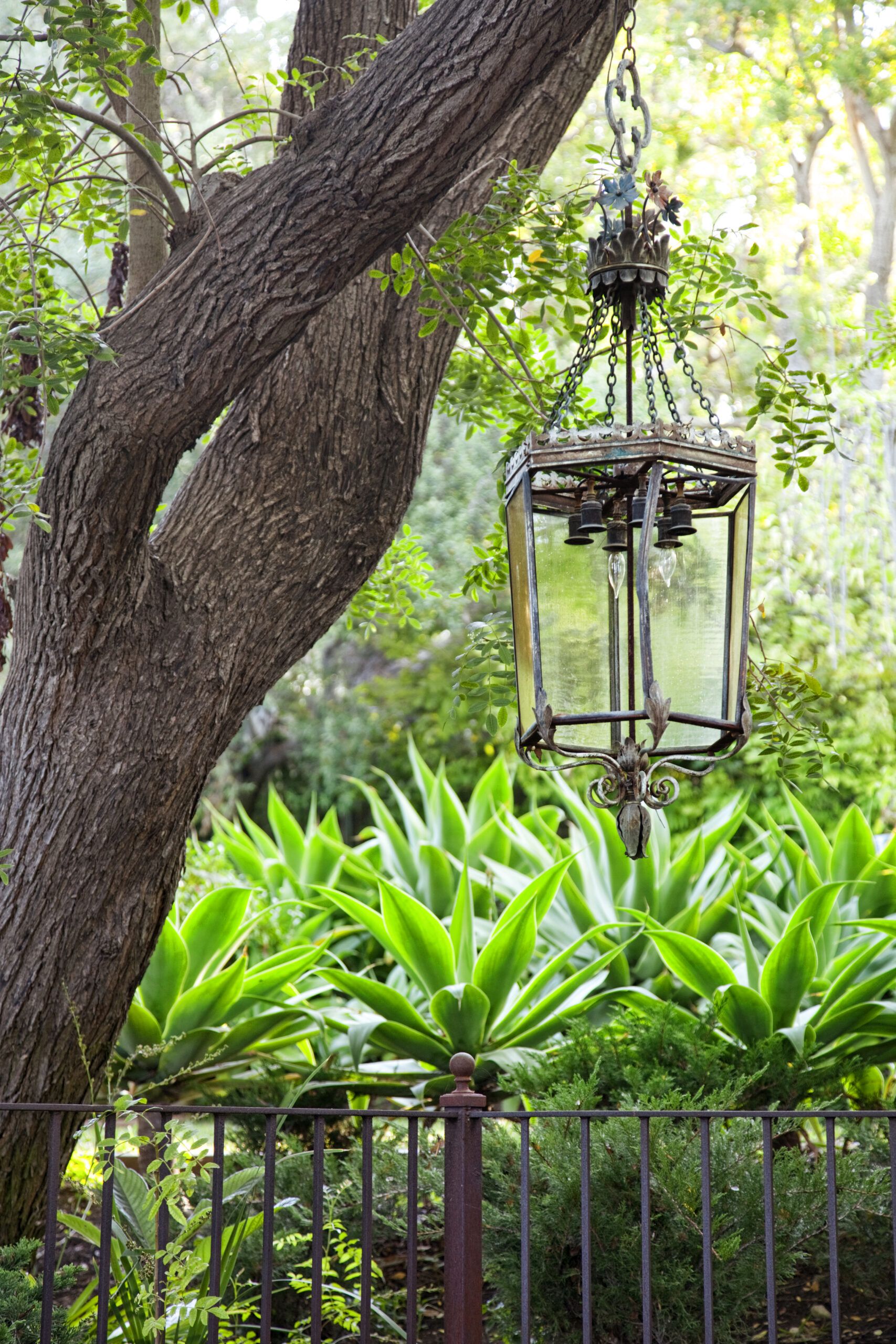
Much more than an afterthought, garden ornaments can guide how you shape and use your outdoor space, and affect how it feels when you’re in it. A wrought-iron gate can mark the entrance to a world of green, a tree-hung lantern raise your perspective, a curved bench inspire a nap. Carefully placed, pretty yet practical, these elements offer subtle but effective clues: Turn here. Look up. Slow down. They also give a garden space a finished look in all four seasons. The trick is to not overdo it.
Shown: A weathered iron pendant, with some bulbs removed for a moody glow, hangs from a tree over a bed of agaves.
2. Design for Outdoor Rooms
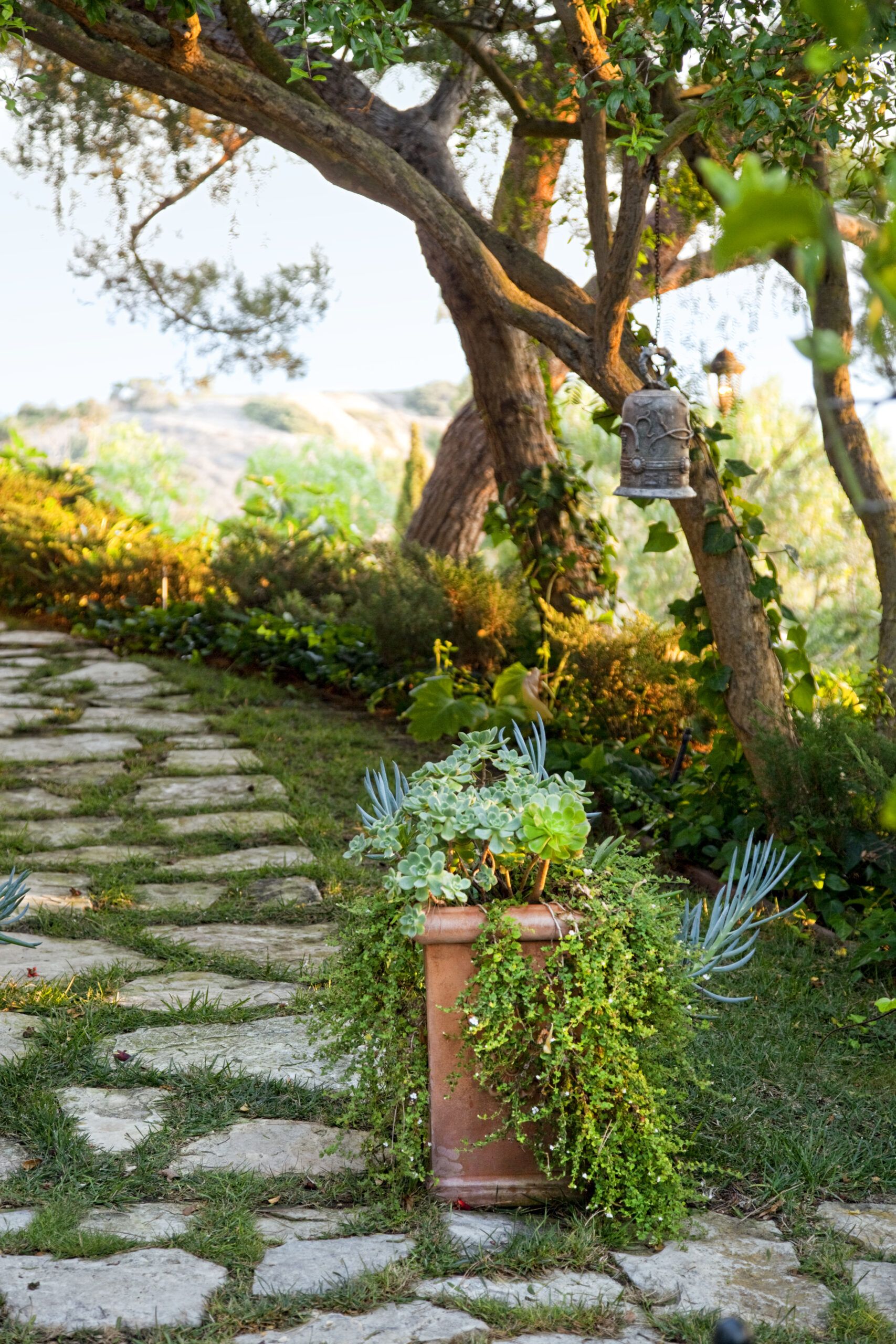
“A furnished garden shouldn’t look too perfect or contrived,” says Susie Beall, an interior designer who, with her architect husband, Ed, conceived the gardens on their rolling acre in Southern California. Their goal: to create outside rooms as comfortable as the ones inside.
Shown: Succulents spill out of a pillar-like planter at a path entrance, with an iron bell hanging from a nearby tree.
3. Don’t Be Afraid of Patina
Just as they remade their 1950s ranch house in the style of a Tuscan farmhouse, the couple wanted a landscape with patina. They started by adhering to a simple, mostly green palette of plants starring pepper, cypress, and Chinese elm trees amid rosemary, acanthus, Virginia creeper, and white ‘Iceberg’ roses. “Garden decor can get lost in a highly colorful landscape,” says Susie. “For us, our mostly stone ornaments are the busy part, and they pop against the green background.” Certain items, picked up on their travels, may be pedigreed and pricey, but they share ground with catalog and nursery finds, so nothing seems too precious. Read on to learn how they used decorative objects to create seductive outdoor living spots.
Shown: A lantern sits on a stone shelf, with a mirror providing a window onto the green world.
4. Repeat Your Home’s Exterior Style
Whatever the style of your home, ornaments can carry it into the landscape, grounding the building in its setting. Here, to harmonize with the rustic stone-clad entry, iron urns are set atop matched terra-cotta pedestals. In the courtyard, a pediment decorated with dolphins and holding potted succulents echoes the theme and creates a focal point. The house’s stone is picked up in the pavers, seamed with grass that softens the walk to the front door.
5. Dress Up Garden Entrances
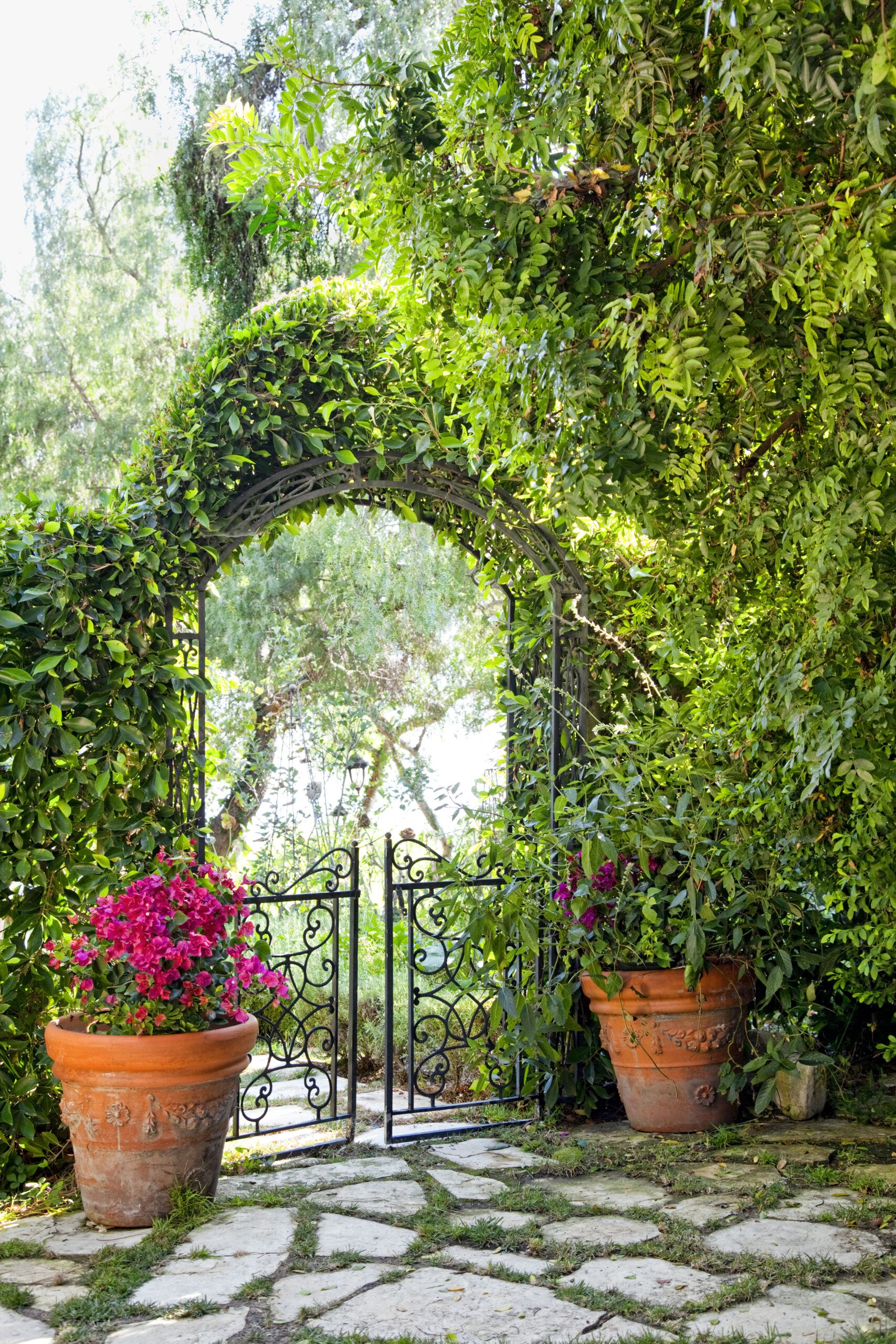
Even in a small landscape, a sequence of discrete spaces, connected by passageways and paths, adds a sense of mystery and expansiveness to an ordinary stroll. The Bealls created a journey that begins with a wisteria-draped arbor near the house and winds downhill, across terraces, along walks, and down steps that continue the theme of eye-catching, weatherworn stone. Paths indicate the way; iron arches and gates—many from gardener’s-supply catalogs and covered with vines—mark transitions to different areas. Potted bougainvillea, citrus trees, and palms further accent entries, as do finials perched on pedestals.
6. Tie Furnishings Into the Overall Scheme
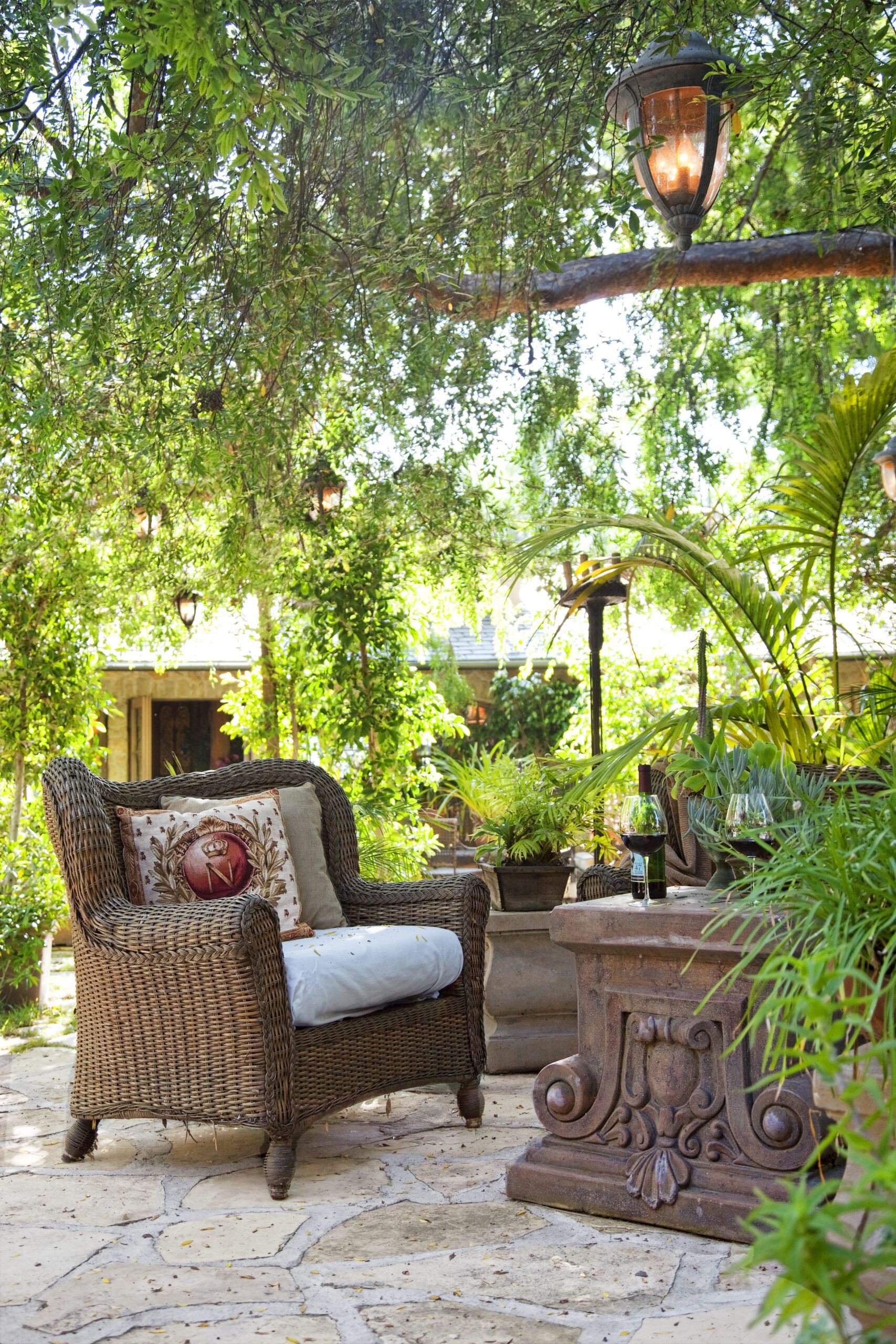
The style of any tables and chairs you choose has a big impact on the look of your outdoor spaces, of course. But they should also feel cohesive with the other decorative objects and materials you use. The Bealls found a pair of inexpensive rust-finished iron dining sets at a pottery yard. With extra chairs scattered around the paved “carpet,” they make a casual lounge for cocktails and conversation.
7. Choose Decor Suited for The Outdoors
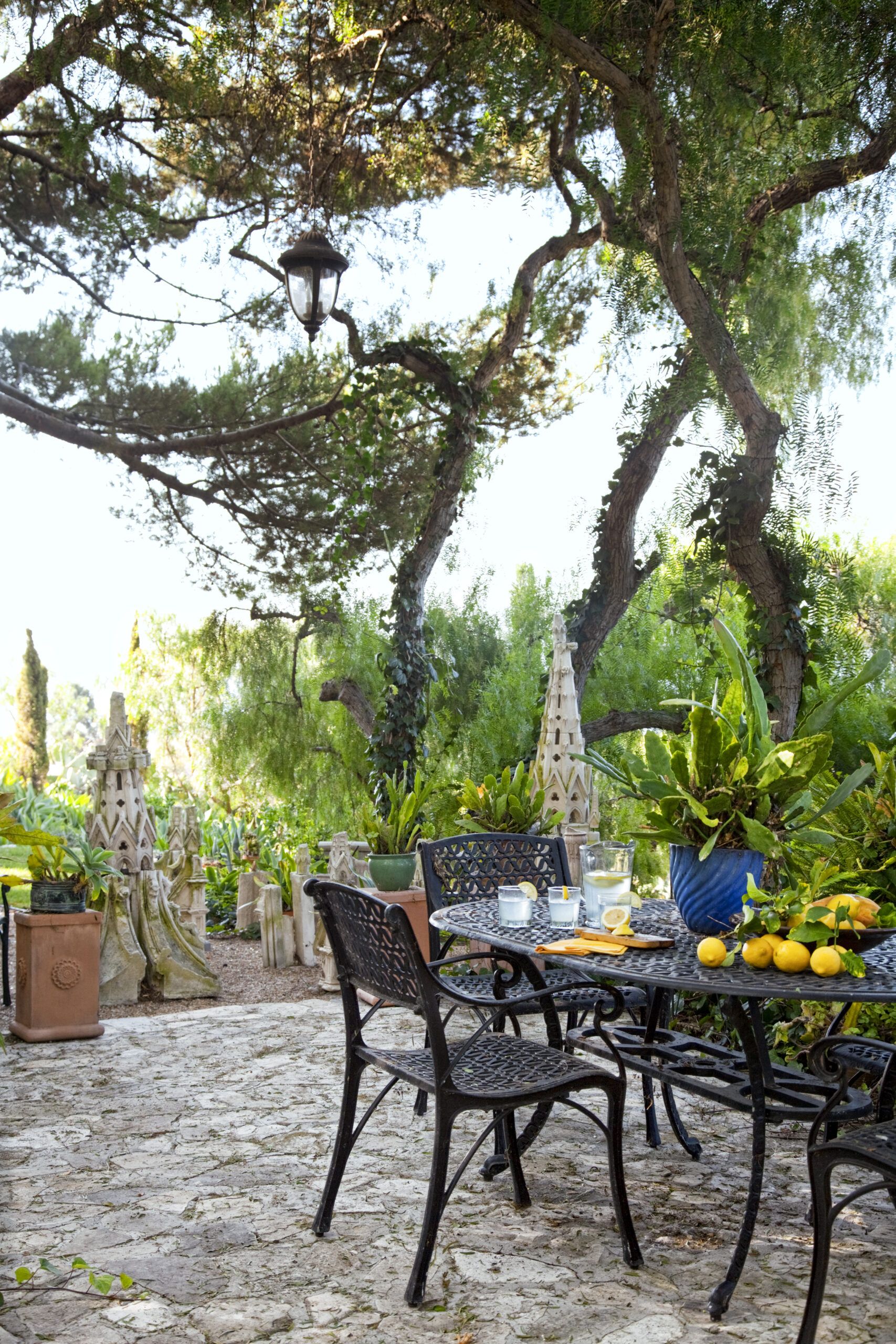
Elsewhere, the couple created an outdoor living room, but instead of pricey all-weather wicker, they chose roll-arm wicker chairs from an import store and weatherized them with spray-on marine varnish. Concrete pottery-yard pedestals double as extra seats and cocktail tables. A black oval aluminum dining set anchors the main gather-round eating space.
8. Take Lighting to Another Level
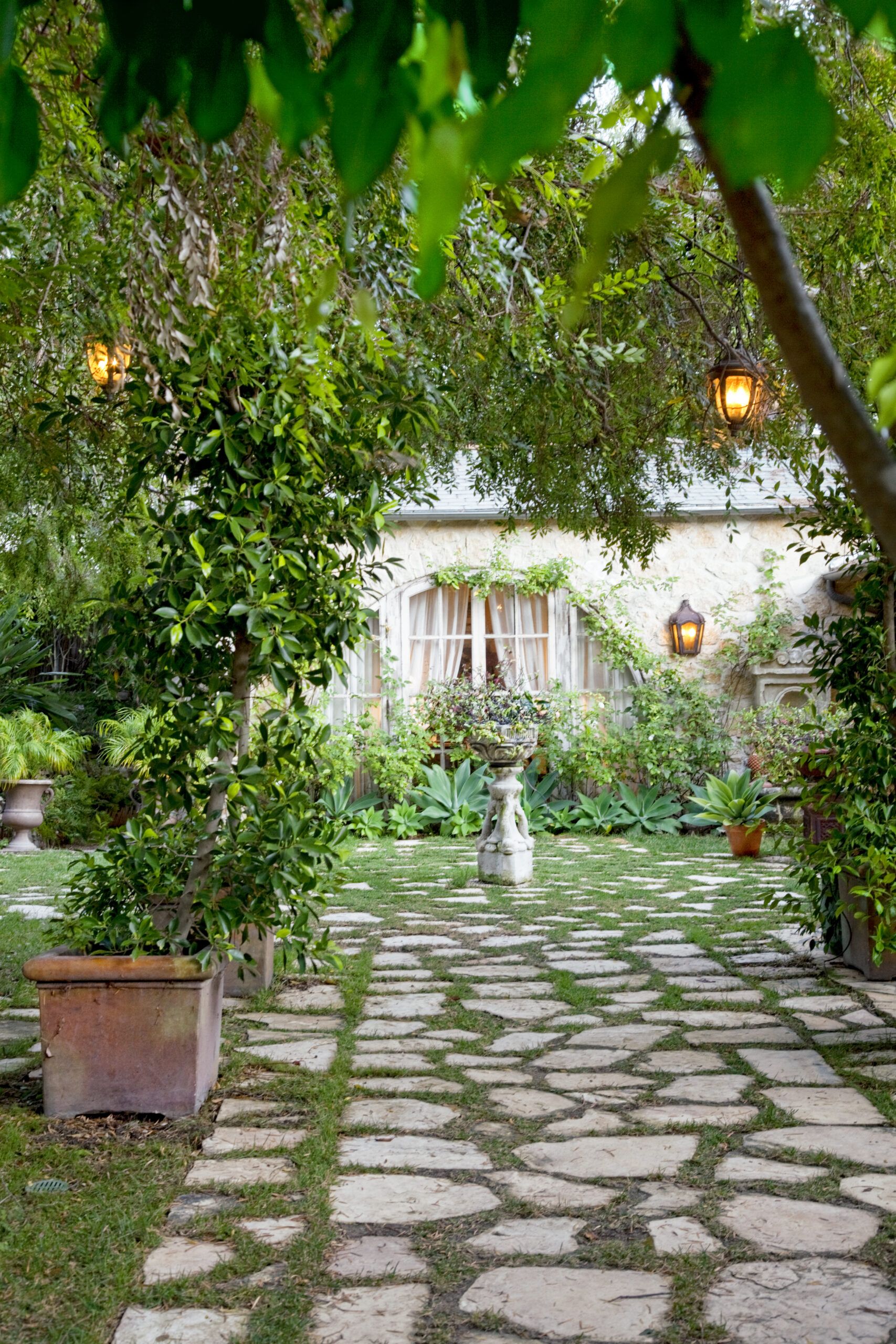
Many landscapes are most romantic after dark—by the glow of the moon and when well-placed electric lights spotlight trees and light up paths. The Bealls took their lighting a step further, hanging gracious outdoor lanterns from the boughs of trees. They also used tall streetlight-style lamps to punctuate patios and roundabouts. All these fixtures coordinate with the lights placed on the house’s exterior walls.
9. Showcase Plant Collections
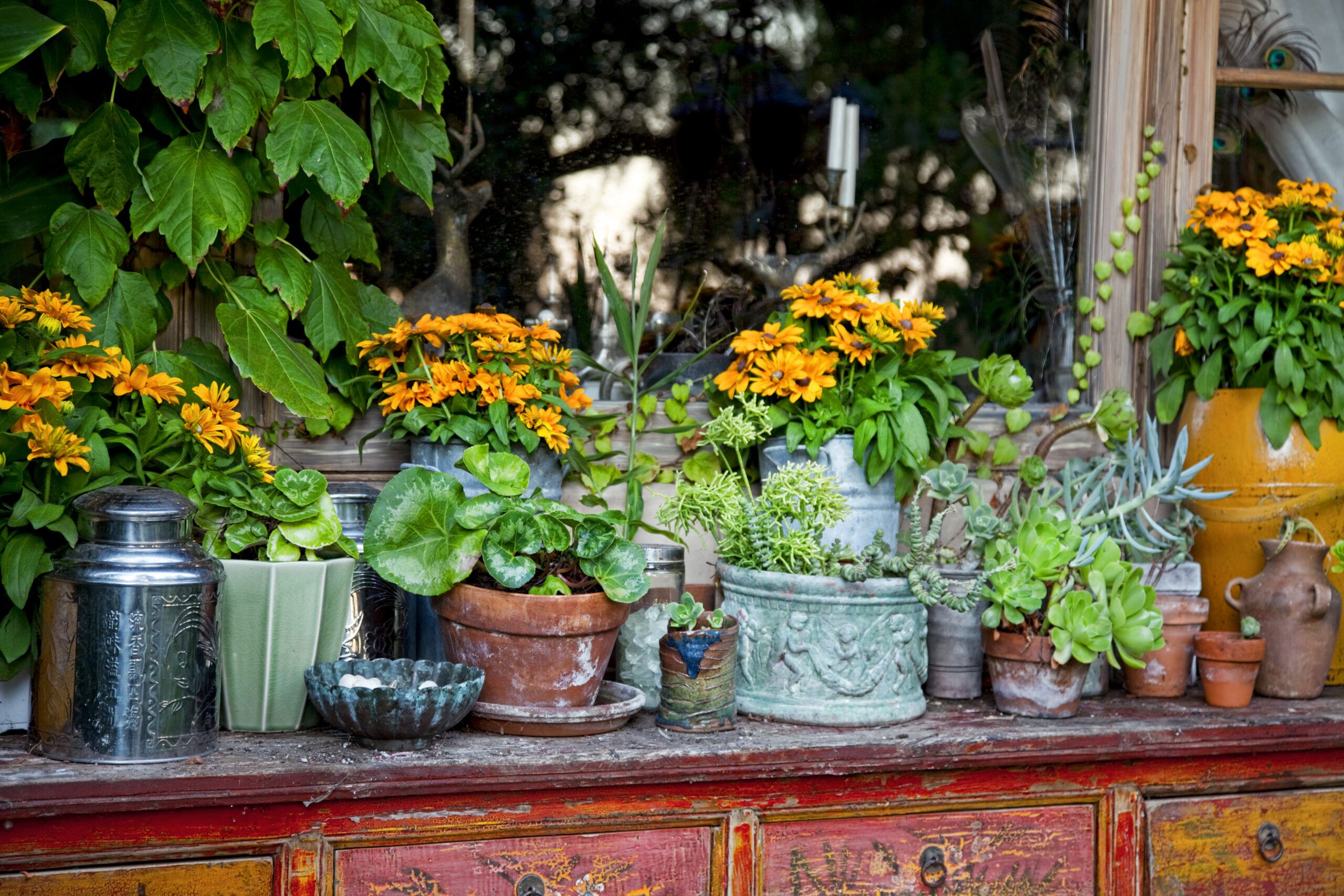
Besides singling out favorite specimens for pots and pedestals, the Bealls grouped container plants where they could appreciate them at eye level. Ed, whose passion is succulents—aeoniums, senecios, echeverias, agaves—displays them on a vintage pine table and a painted chest of drawers that he coated with a waterproofing sealer for wood. “If you tucked these plants in beds, they’d disappear,” Susie notes. “Here, you can study all their unusual shapes.”
10. Embrace Unusual Displays
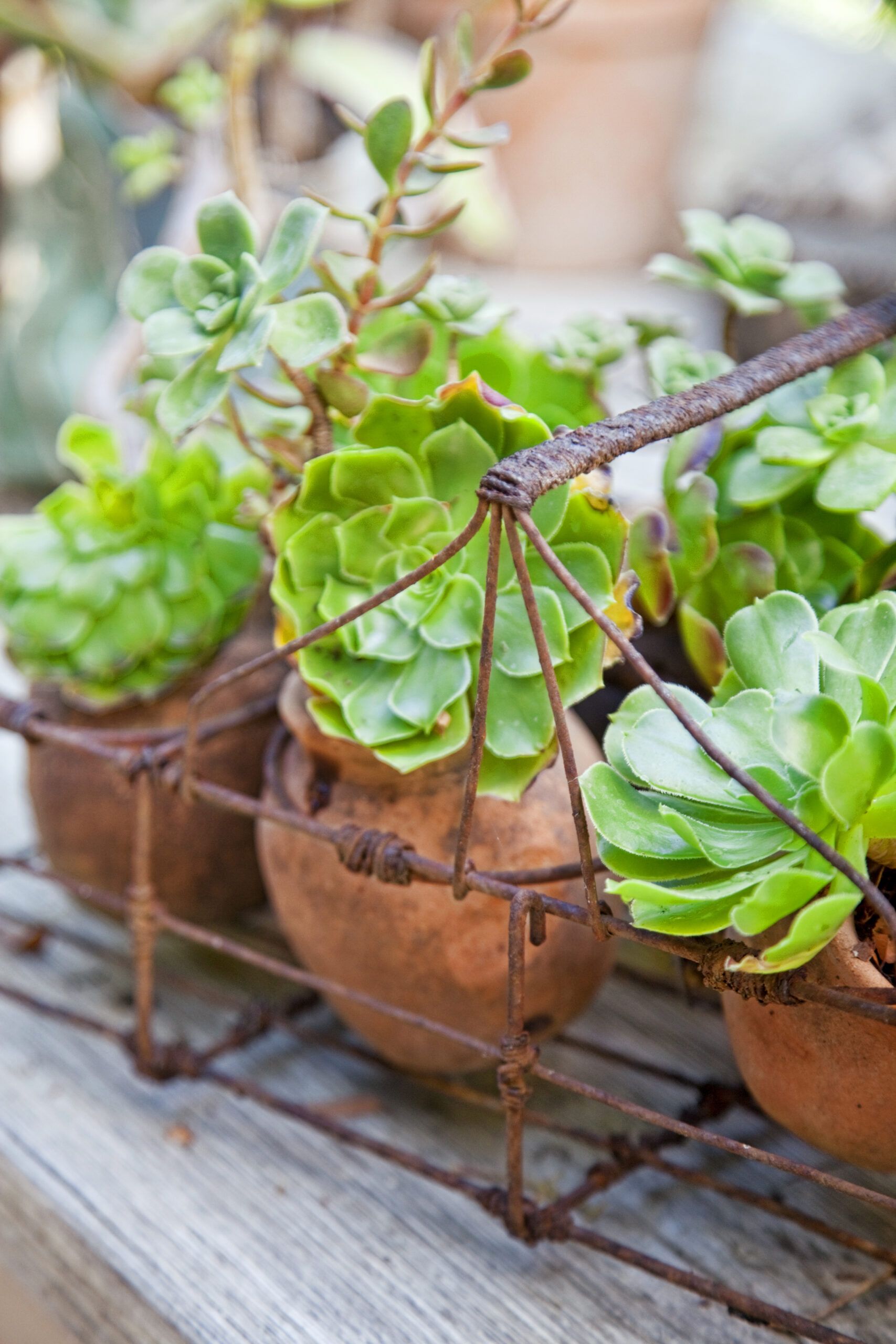
A rusty iron basket cradles tabletop succulents so they can stand out from the plant beds.
11. Let Decorative Elements Play Up Sound

Hearing the trickle of water is an all-but-irresistible lure to exploring a garden. Listening to its music, you want to track it to its source, and in the Bealls’ landscape there are many. A fountain with an octagonal basin creates the liquid soundtrack for the herb garden. Another, echoing the columnar shape of Italian cypress trees nearby, bubbles amid flower-like agaves, drawing hummingbirds in droves. Both pieces were pottery-yard scores.
12. Entice with Garden Scents
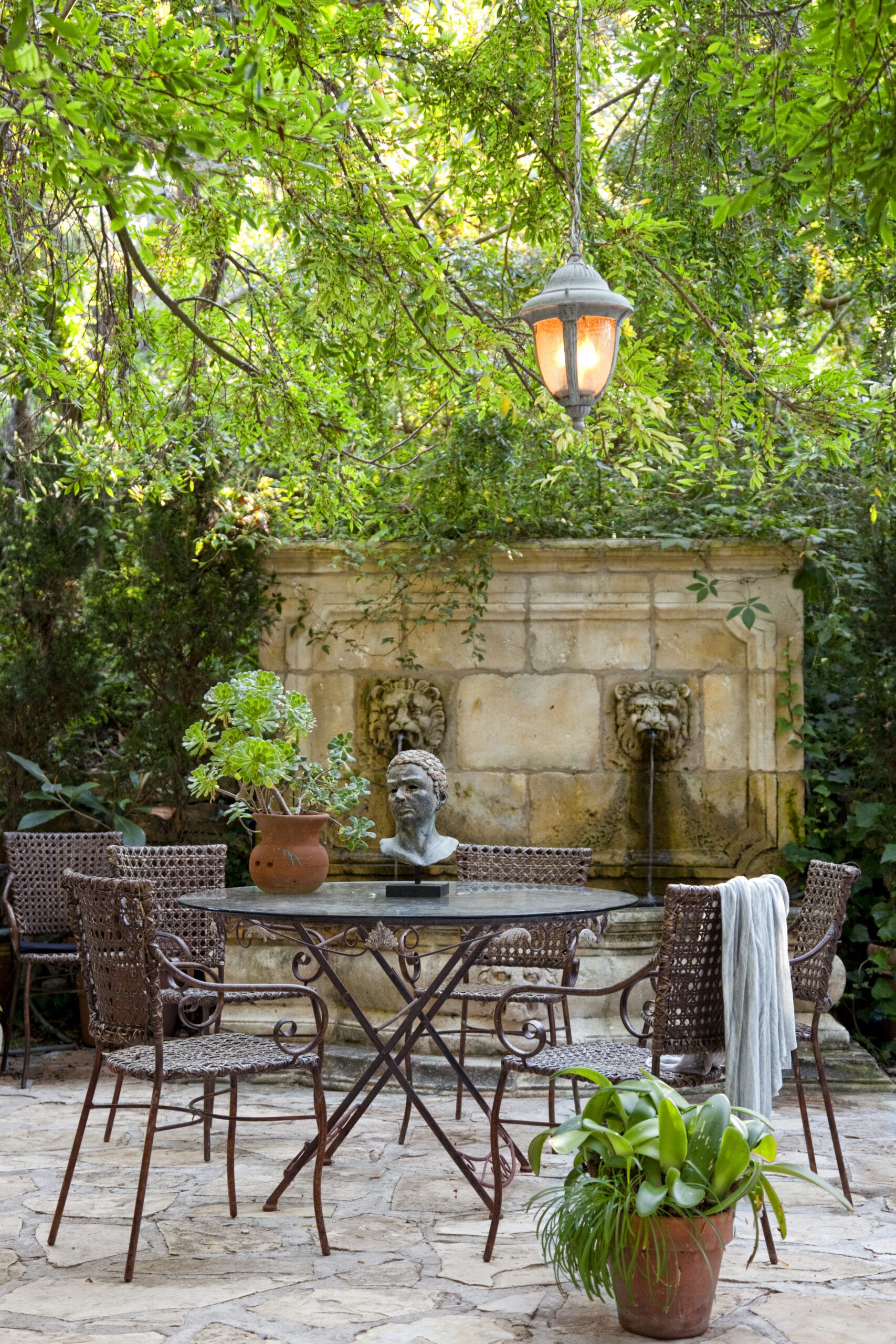
The fountain with lions’ heads that cools the lounging area is an antique find. Plant perfumes, often wafting from architectural containers, demand their own blissful attention: The entryway urns welcome visitors with honeysuckle and jasmine; giant herb-garden containers offer up lemon blossoms; and night-blooming cereus opens in pots around the main dining table.
13. Use Plants Themselves as Ornaments
Certain plants are inherently architectural or can be pruned to look that way. Among those naturally shaped to give the gardens guiding lines are Italian cypresses, which rise like green columns against the Bealls’ hillside views. Others include the rosettes of Agave attenuate that tumble around stone stairways and fountains in dynamic contrast to the ramrod-straight cypress.
14. Add Splashes of Color with Ceramics
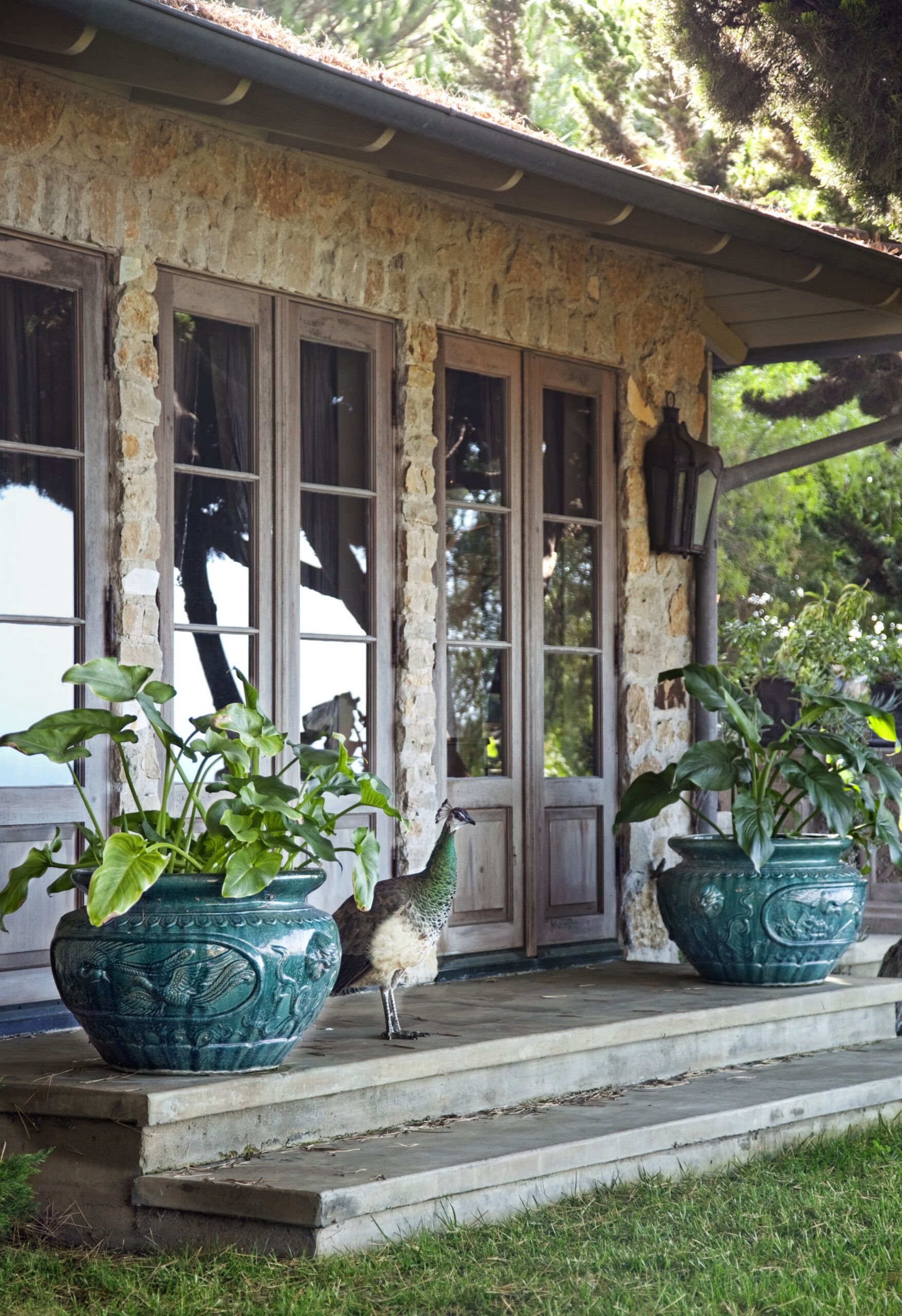
Appreciating the serenity of a largely green garden, the Bealls were sparing with color accents, so those that are there have great panache. On a patio outside the master bedroom, they flanked French doors with teal-blue ceramic pots filled with foliage plants that draw the eye from a distance.
15. Repurpose Found Objects as Containers
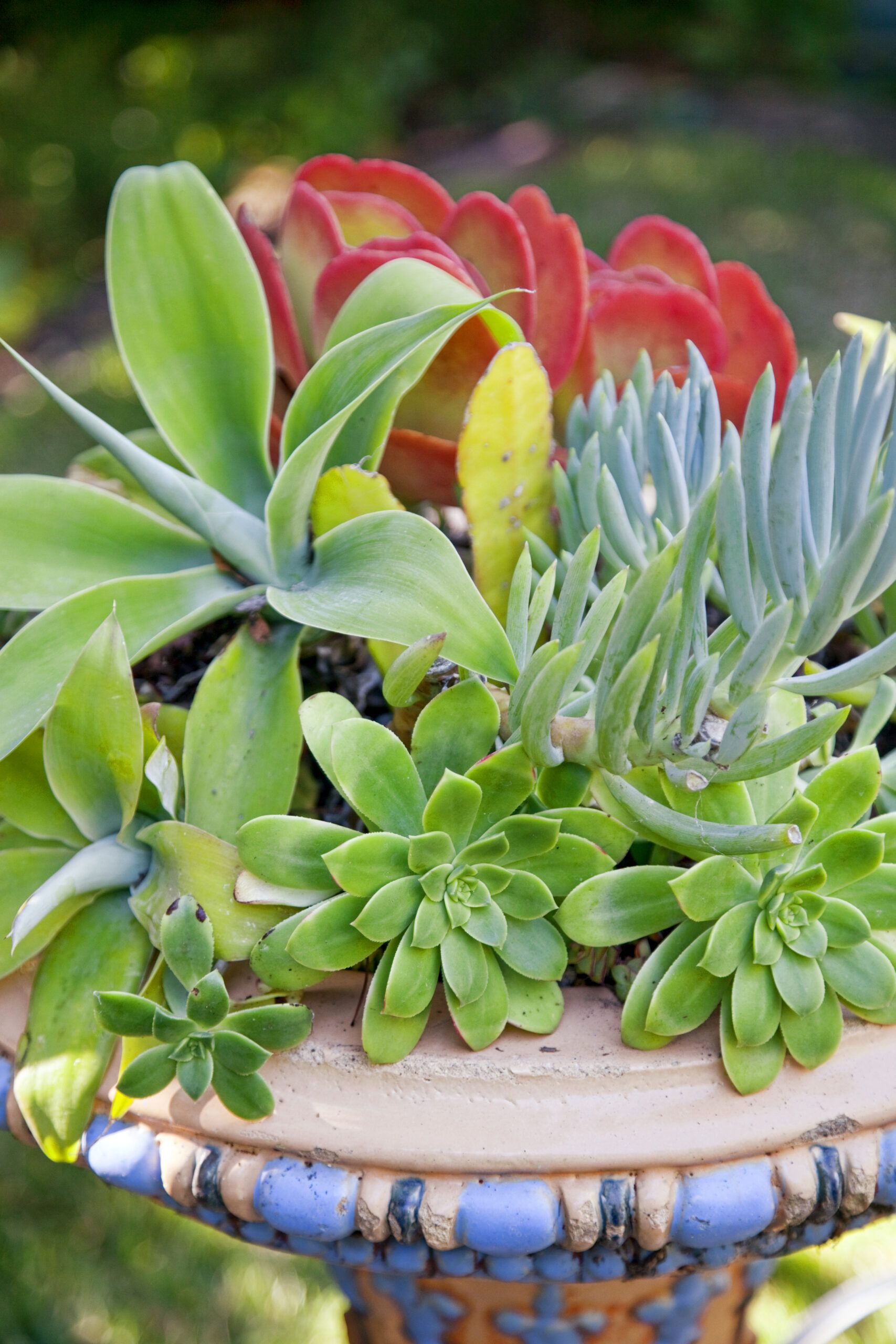
A 1920s drinking fountain decked dramatically with vintage Malibu art tile is repurposed as a planter, holding more of Ed’s succulents.
16. Give a Garden a Lived-In Look
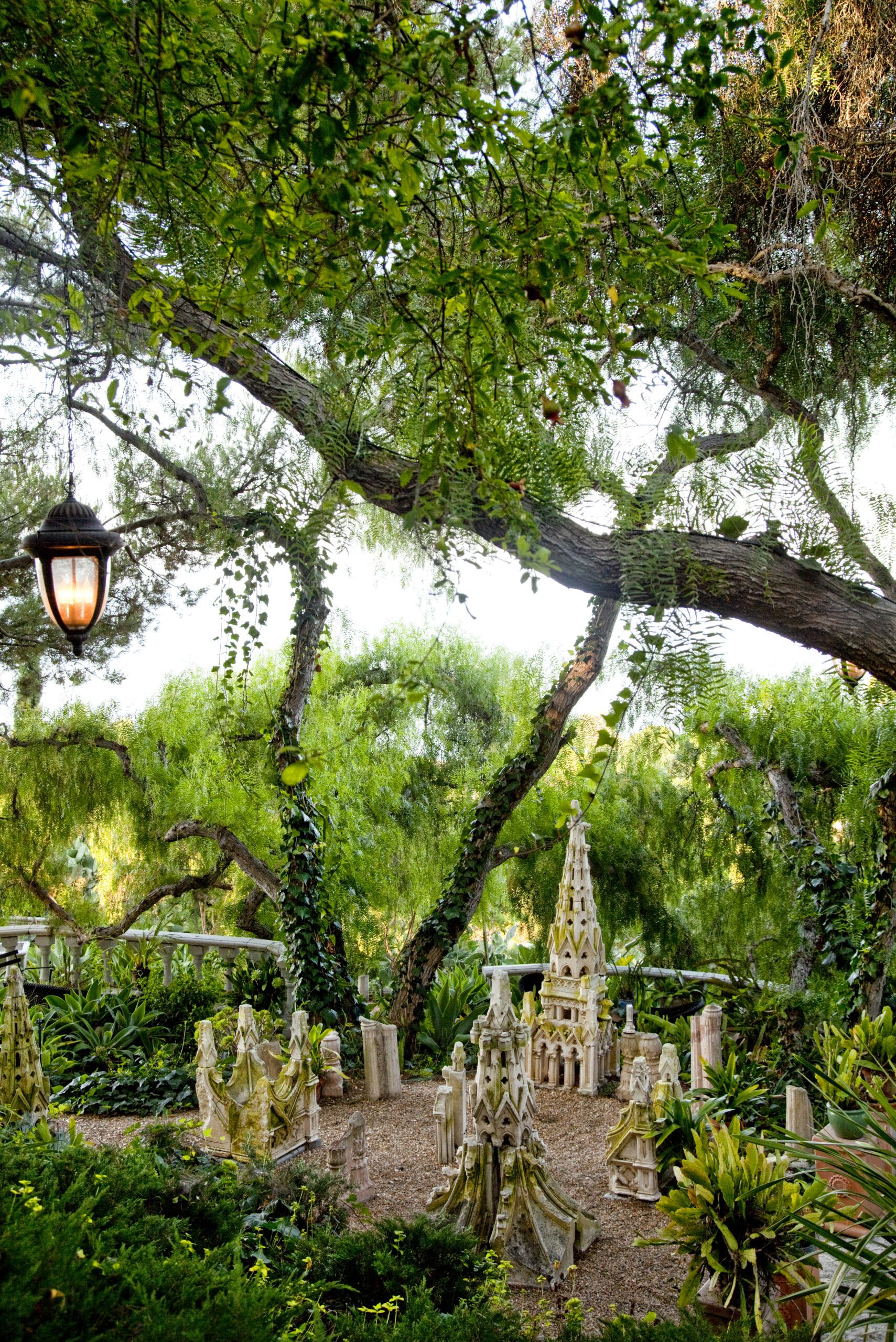
Ornaments with the patina of antiques can make a new garden appear as if it’s been growing forever. To achieve this illusion, the Bealls incorporated treasures from their travels—including Gothic cathedral fragments bought from a salvage dealer—into landscape scenes. Placed in a gravel clearing, these stone bits and spires bring a fanciful, lost-city tableau to a garden designed just a few years ago.
17. Lend Some Historical Context
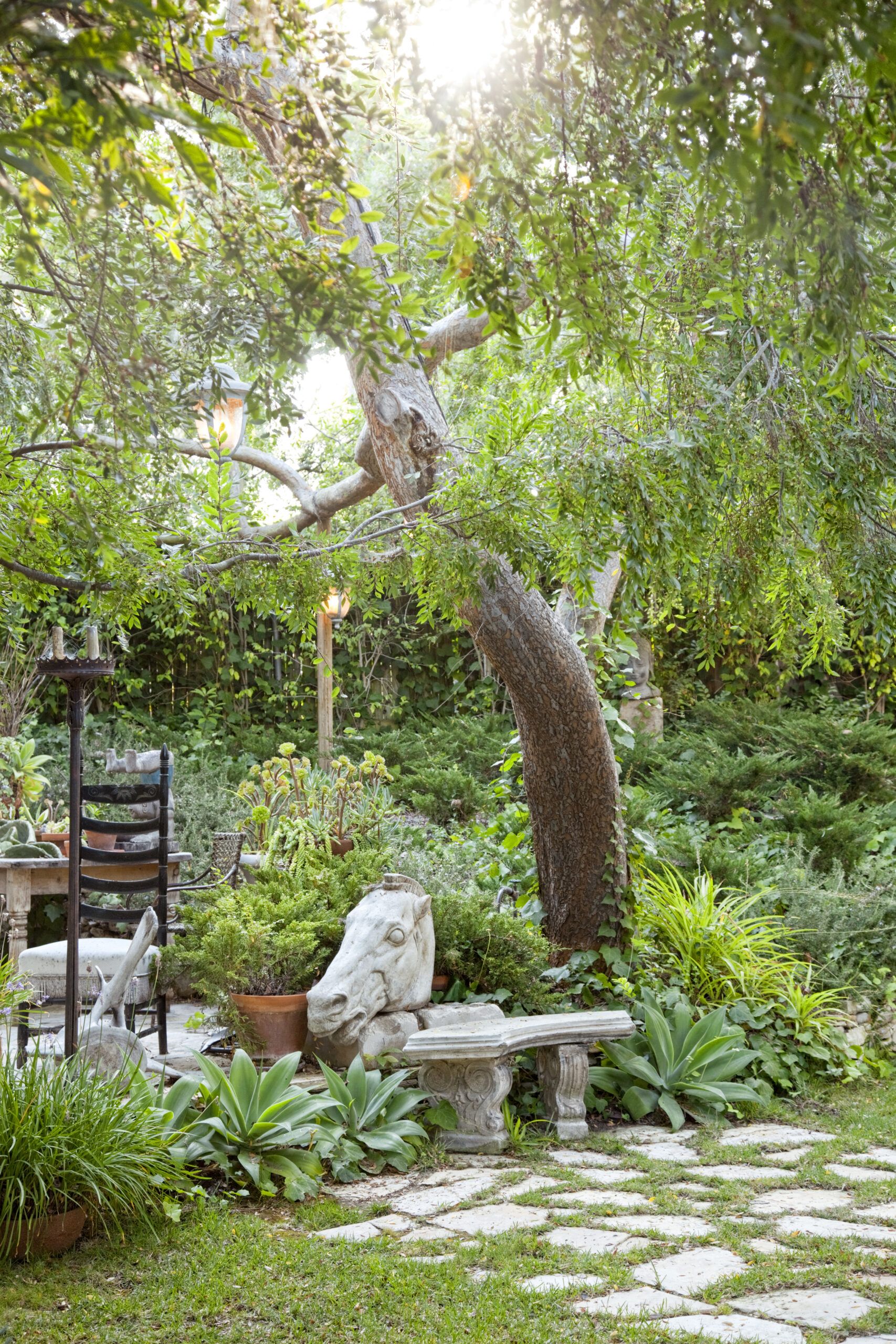
For a similar effect, they placed a concrete horse’s head—a cast from one that had adorned the Parthenon—beside a bench. A garden-ornament catalog find, it’s right where a seated visitor can reach out and touch it.
18. Mix in Some Old World Flavor
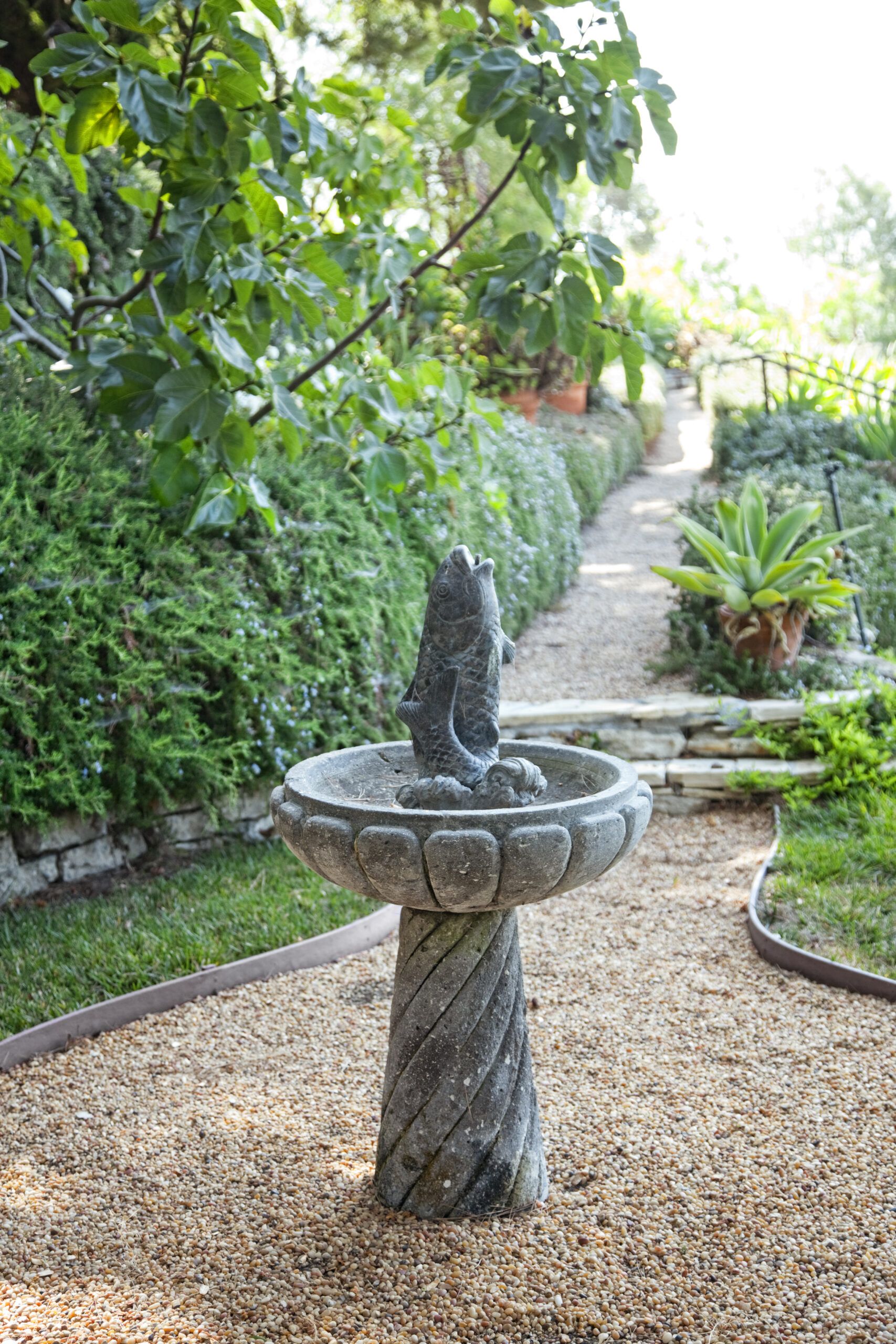
A birdbath with a fish at its center, placed where paths converge, has the look of an Old World fountain. Rusty lanterns, plant baskets, and watering cans, some picked up at flea markets, round out the timeworn decor